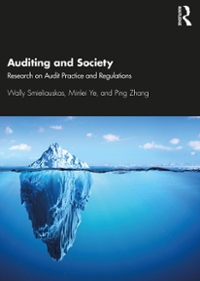Question
Question 1 The Paris Convention: a. Is the seminal patent protection treaty. b. Requires national treatment for foreign trademark and patent applications from signatory countries.
The Paris Convention:
| a. | Is the seminal patent protection treaty. | |
| b. | Requires national treatment for foreign trademark and patent applications from signatory countries. | |
| c. | Provides a trademark holder in any signatory country a twelve-month period of priority within which to make similar applications in signatory countries. | |
| d. | A, B, and C. |
In the Civil Rights Act of 1991, Congress extended Title VII to:
| I. | U.S. firms operating outside the United States under the control of a U.S. entity. |
| II. | U.S. firms operating outside the United States except where compliance with Title VII would violate the local law of the country where the firm is located. |
| III. | Foreign firms operating abroad that employ U.S. citizens. |
| a. | I only. | |
| b. | I and II. | |
| c. | I and III. | |
| d. | II and III. |
Under the Foreign Sovereign Immunities Act, a federal court would not have jurisdiction over a foreign nation unless:
| a. | The foreign nation's acts were diplomatic in nature. | |
| b. | Authority has been granted for the court to hear the case by the president of the United States. | |
| c. | The foreign government's actions constitute a commercial activity. | |
| d. | The foreign government committed an act of state. |
Under the Foreign Sovereign Immunities Act, federal courts in the U.S. cannot hear which of the following cases:
| a. | The foreign government breached a contract with the U.S. firm for the sale of goods. | |
| b. | A dispute over the amount of compensation paid by a foreign government to a U.S. investor when the investor's real estate was taken to build a national airport. | |
| c. | The foreign government is being sued for money damages sought as a result of personal injury or death caused by the foreign government or its agents in the United States. | |
| d. | All of the above are exceptions. |
In the U.S., an employer may engage in employee discrimination if it is "reasonably necessary to the normal operation of the particular business or enterprise," a defense known as the:
| a. | bona fide occupational qualification defense. | |
| b. | occupational qualification defense. | |
| c. | occupational exception defense. | |
| d. | bona fide exception defense. |
Question 7
Common restrictions imposed on the use of technology include geographic limitations on the licensee's manufacturing and/or marketing activities. These types of restrictions are also known as:
| a. | Field of use limitations. | |
| b. | Operating limitations. | |
| c. | Non-technical limitations. | |
| d. | Implied effort of cooperation limitations. |
Question 8
Many technology owners have avoided introducing technology or technological products into Brazil because:
| a. | Spies and foreign agents have been stealing the technology and selling it to the communist countries. | |
| b. | The market has been too weak to support these high-tech products. | |
| c. | Brazilian taxes on the introduction of technology into the country have been prohibitively high. | |
| d. | Technology transfer agreements have been interpreted under Brazilian law so that the original owner loses many rights in the technology. |
Question 9
TRIPS requires every member of the World Trade Organization to:
Question 10
The Chinese government practices a form of institutional discrimination through the Hukou, which is a mechanism for determining social entitlements based on:
| a. | gender. | |
| b. | age. | |
| c. | occupation. | |
| d. | place of residence. |
| a. | Abide by the Paris Convention. | |
| b. | Abide by the Berne Convention. | |
| c. | Apply national treatment to foreign owners of intellectual property rights. | |
| d. | Provide patent protection for processes. | |
| e. | All of the above.
|
The Chinese government practices a form of institutional discrimination through the Hukou, which is a mechanism for determining social entitlements based on:
| a. | gender. | |
| b. | age. | |
| c. | occupation. | |
| d. | place of residence. |
Step by Step Solution
There are 3 Steps involved in it
Step: 1

Get Instant Access to Expert-Tailored Solutions
See step-by-step solutions with expert insights and AI powered tools for academic success
Step: 2

Step: 3

Ace Your Homework with AI
Get the answers you need in no time with our AI-driven, step-by-step assistance
Get Started


